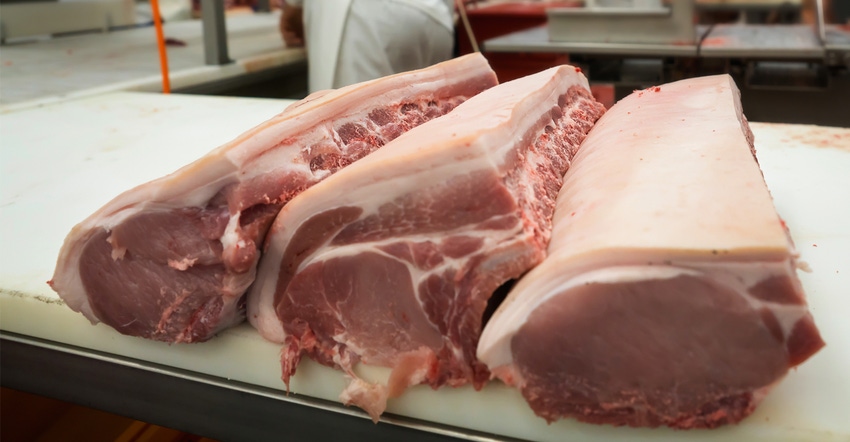
Livestock producers looking to cut out the middleman by marketing meat products directly to consumers need to adhere to state and federal regulations.
Nathan Kroh, information coordinator for the North Dakota Department of Agriculture’s meat and poultry inspection program, says those regulations are stringent and must be followed to protect producers and consumers.
He says there are two requirements for meat to be sold in North Dakota:
Animals must be slaughtered under either state or federal inspection, as required by the Federal Meat Inspection Act.
A producer needs a license through the North Dakota Department of Health’s Food and Lodging Division, or the local health unit.
“In order for a producer to obtain a license from the Division of Food and Lodging, the meat products must have been inspected through the entire process from slaughter all the way through to the finished labeled package,” Kroh says.
Producers wishing to sell meat off their farm must sell it as a frozen product. “You need a thermometer to record what your temperatures are and make sure things are sold frozen,” he says. “It’s a very simple inspection process.”
Kroh clarifies that even if your facility is as simple as a “freezer in the shop,” it will still be required to have an inspection by the local licensing jurisdiction. There are multiple licensing entities across North Dakota, and it depends on the county of operation to which producers would need to contact.
Don’t forget the label
Before getting too far into the direct-marketing game, Kroh says, “You cannot get a license to sell beef or pork until you have a label reviewed meeting all the federal and state labeling requirements.”
There are eight parts of every label that are scrutinized before one can be placed on a package of meat, including the product name, ingredient statement, nutrition facts panel and others.
Most of all the label must be supportable and truthful. ��“If a label is misleading, it is considered misbranded, and that could be terms for a recall or some other type of injunction against that product,” Kroh says.
All claims made on a label are submitted to a labeling officer, regardless if the product falls under jurisdiction of the state or the Food Safety and Inspection Service (FSIS) for inspection.
“We actually do require that the definition of those claims is supportable, and it makes sense to the claim being made. The producers have to prove that they are actually raising that animal within the context of their claim,” he says.
One example Kroh uses is a label that claims the packaged beef came from grass-fed cattle. The producer will need to support that claim with actual records and an affidavit that tells the processor what is meant by grass-fed. “Grass-fed no longer has an [Agricultural Marketing Service] definition,” he says. “It’s more of a producer-supported definition.”
Producers must submit records to the slaughter facility and the processing facility to support the label claims, and Kroh says processors are responsible for all labeling put on products. “Whether they do it for a third party or a ranch, those labels cannot be applied until they have been approved by FSIS or USDA.”
Inspection important step
In addition to being properly labeled, meat from livestock that is intended for sale needs to be harvested under official inspection at approved plants, and product intended to be sold across state lines will need to be processed at a federally inspected plant.
The North Dakota Meat and Poultry Inspection Program adds farmed cervidae, llama, bison, other large domesticated animals, domesticated rabbits and poultry to the species under the USDA list.
“In North Dakota, inspected and passed meat sales are limited to North Dakota borders, but there is the option to take it to federal plants, which allows for meat sales anywhere in the United States,” he says.
Producers seeking more information on how to proceed into direct marketing of their meat products can contact Kroh at [email protected] or 701-328-4767, or visit the North Dakota Department of Agriculture.
Read more about:
MeatpackingAbout the Author(s)
You May Also Like






